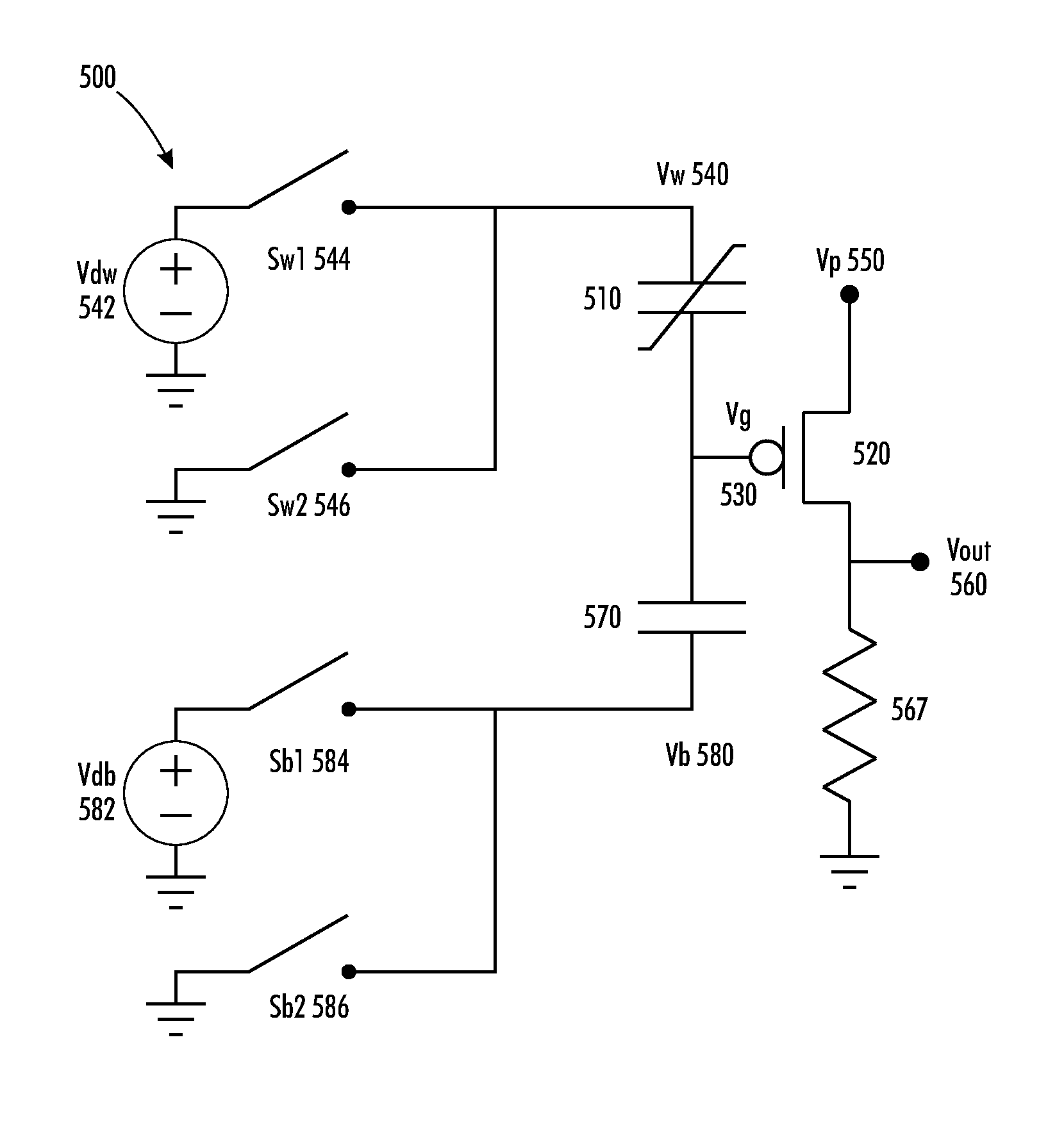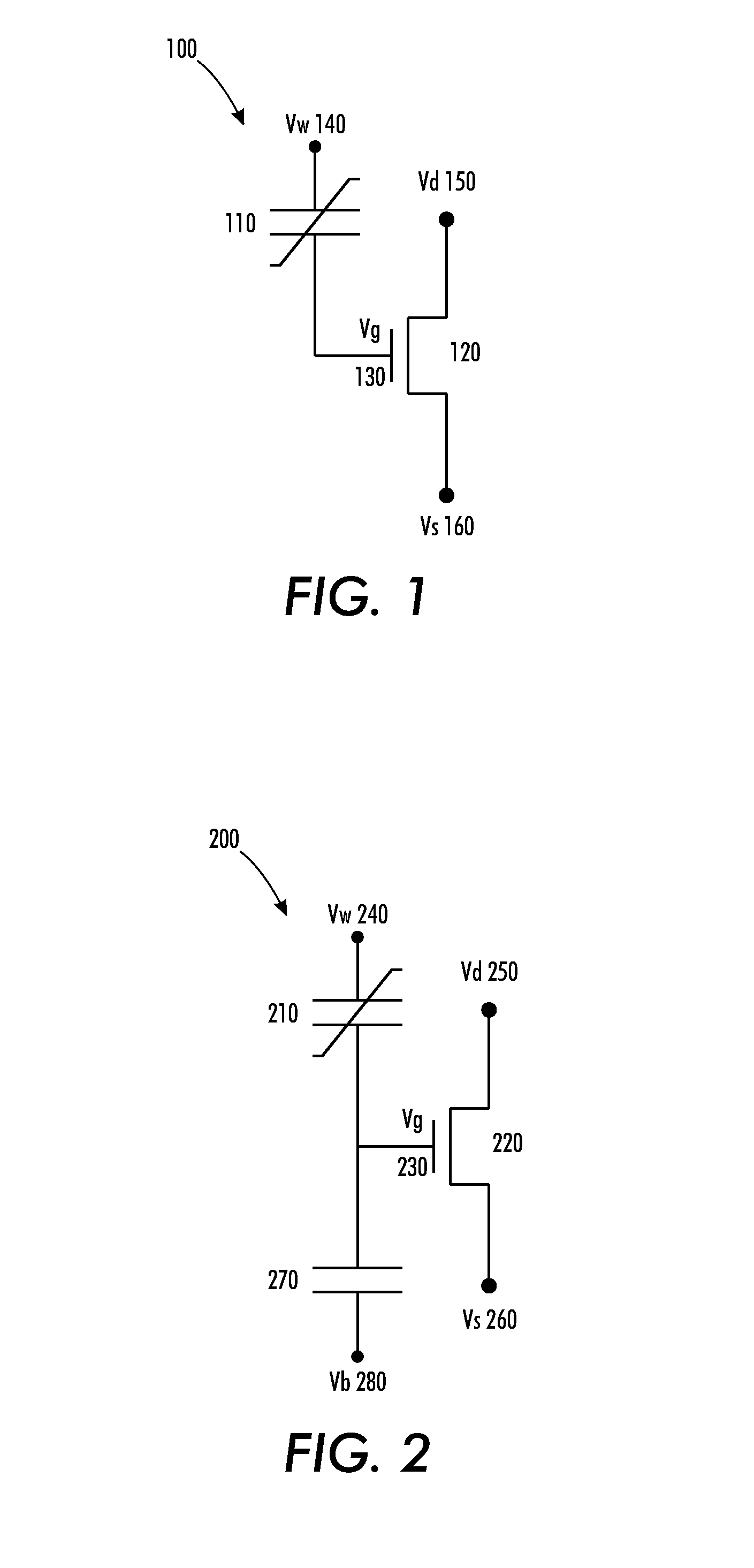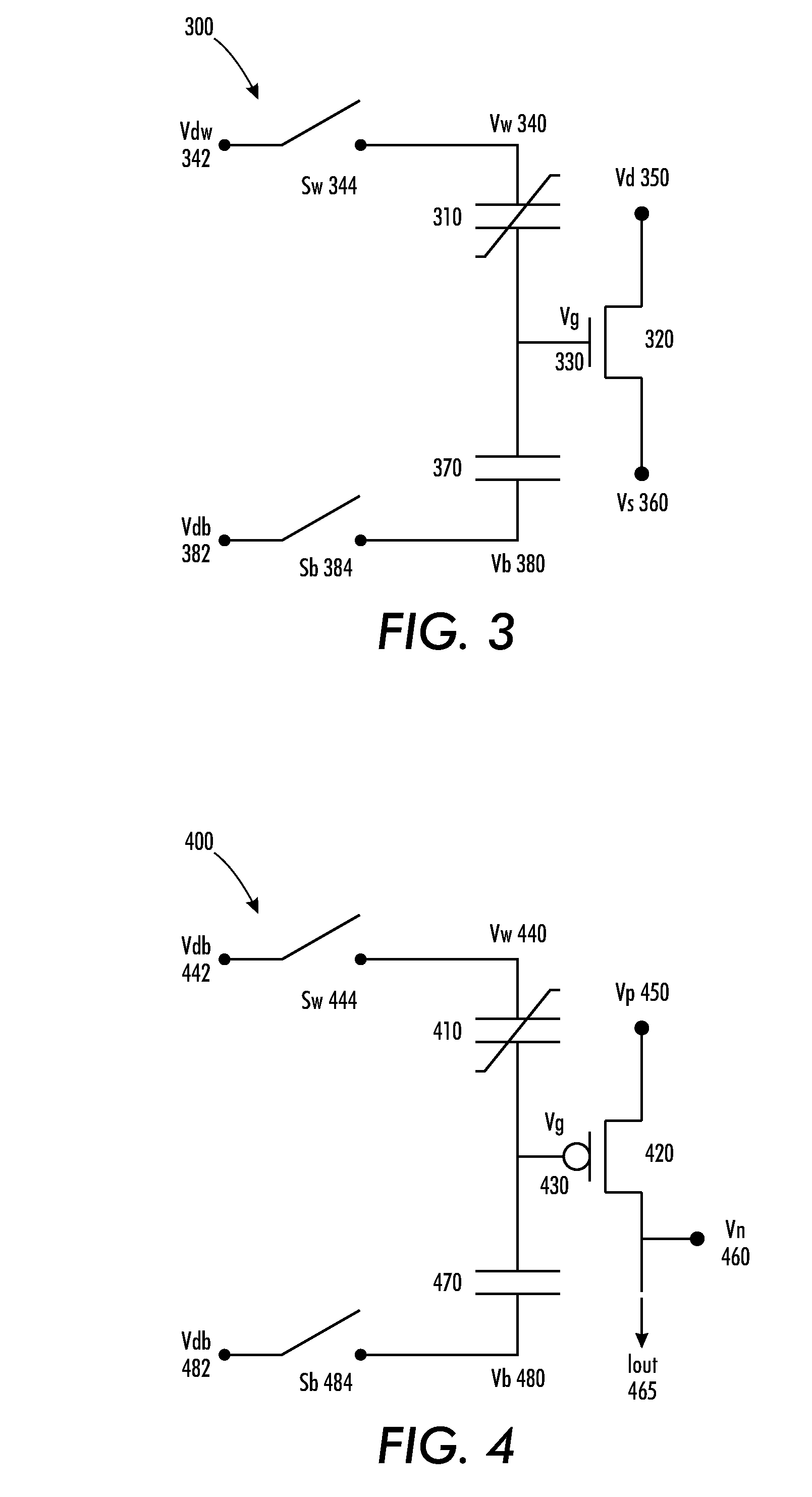Systems and methods for writing and non-destructively reading ferroelectric memories
a technology of ferroelectric memories and non-destructive reading, applied in the field of systems and methods for reading and writing ferroelectric memories, can solve the problems of difficult or impossible manufacturing in many processes, undesirable presence of charge or sense amplifiers, and comparatively significant cost to the memory cell
- Summary
- Abstract
- Description
- Claims
- Application Information
AI Technical Summary
Benefits of technology
Problems solved by technology
Method used
Image
Examples
Embodiment Construction
[0003]This disclosure relates to systems and methods for reading and writing ferroelectric memories and for implementing the reading and writing processes using organic or other thin-film transistors, where the reading is effected in a non-destructive manner to the stored data and / or the writing function is separated from the reading function in the writing / reading circuitry.
[0004]2. Related Art
[0005]Ferroelectric memories are non-volatile electric memory components that store information as remnant polarization in a ferroelectric material. A wide variety of usable ferroelectric materials exist. Often, the ferroelectric materials in ferroelectric memories are provided in the form of ferroelectric polymers including, for example, poly(vinylidenefluoride-co-trifluoroethylene) or P(VDF-TrFE), which tend to be very attractive in many ferroelectric memory applications based on the ease with which they can be physically manipulated and the ease with which the ferroelectric properties can ...
PUM
 Login to View More
Login to View More Abstract
Description
Claims
Application Information
 Login to View More
Login to View More - R&D
- Intellectual Property
- Life Sciences
- Materials
- Tech Scout
- Unparalleled Data Quality
- Higher Quality Content
- 60% Fewer Hallucinations
Browse by: Latest US Patents, China's latest patents, Technical Efficacy Thesaurus, Application Domain, Technology Topic, Popular Technical Reports.
© 2025 PatSnap. All rights reserved.Legal|Privacy policy|Modern Slavery Act Transparency Statement|Sitemap|About US| Contact US: help@patsnap.com



